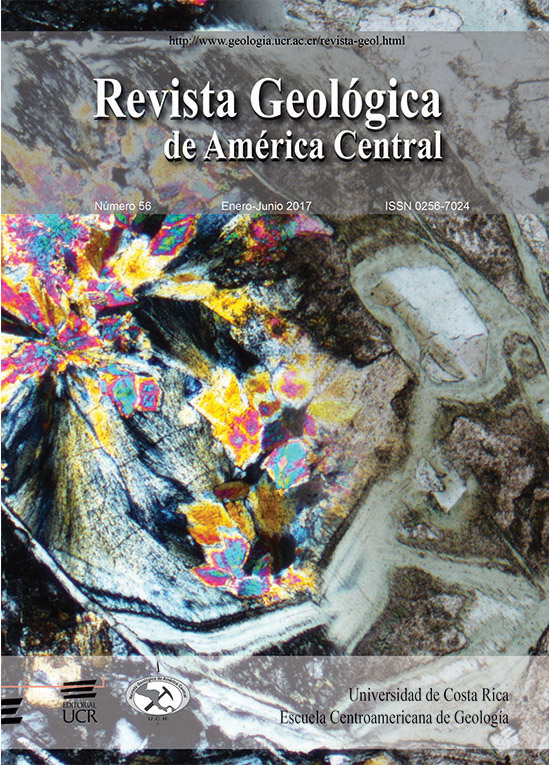Abstract
A study on slope instability has been made in the western sector of Irazú volcano, which comprises the definition of the geomorphological framework, the application of finite element technique known as shear resistance reduction, to analyze the stability of the sector defined as in process of destabilization and to stablish the volume of the potential landslide. Río Sucio Oeste Active Landslide (DARSO) was identified as the only active slide in the studied sector. In addition, it has been established that Retes Inactive Landslide (DIR) shows evidence of reactivation in the sector of its main escarpment. Moreover, it is not expected that DSPD landform presents a movement to the southwest in the future and the deformations shown by the model of a northwestward detachment become significant once the properties of shear strength are reduced by a factor of around 1.30; thus developing the collapse of the slope towards the northwest. If it is considered that the safety factor has a value of around 1.30, there must be a triggering factor for the landslide to develop. Finally, the volume of the landslide is estimated as 7 million cubic meters.References
Alvarado, G. (2008). Los volcanes de Costa Rica: geología, historia y riqueza natural y su gente (3 ed.). San José: EUNED.
Cruden, D. M., y Varnes, D. J. (1996). Landslides types and processes. En K. Turner y R. L. Schister (eds), Landslides: investigation and mitigation (pp. 675). Whashington, D.C: National Academy Press.
Hoek, E., Carranza-Torres, C., y Corkum, B. (2002). Hoek-Brown criterion. Presentado en el 5th North American Rock Mechanics Symposium y 17th Tunnelling Association of Canada, Toronto.
Montero, W., y Alvarado, G. E. (1995). El terremoto de patillos del 30 de diciembre de 1952 (Ms=5,9) y el contexto neotectónico de la región del volcán Irazú, Costa Rica. Revista Geológica América Central, 18, 25-42.
ROCSCIENCE. (2004). A new era in slope stability analysis: shear strength reduction finite element technique. Recuperado de https://www.rocscience.com/documents/pdfs/library/StrengthReduction.pdf
ROCSCIENCE. (2007). RocLab: Rock mass strength analysis using the Hoek-Brown failure criterion (Guía del usuario del programa de cómputo RocLab 1.033). Toronto: Rocscience.
Van-Zuidam, R. A. (1986). Aerial photo interpretation in terrain analysis and geomorphologic mapping. The Netherlands: Smits Publishers.






